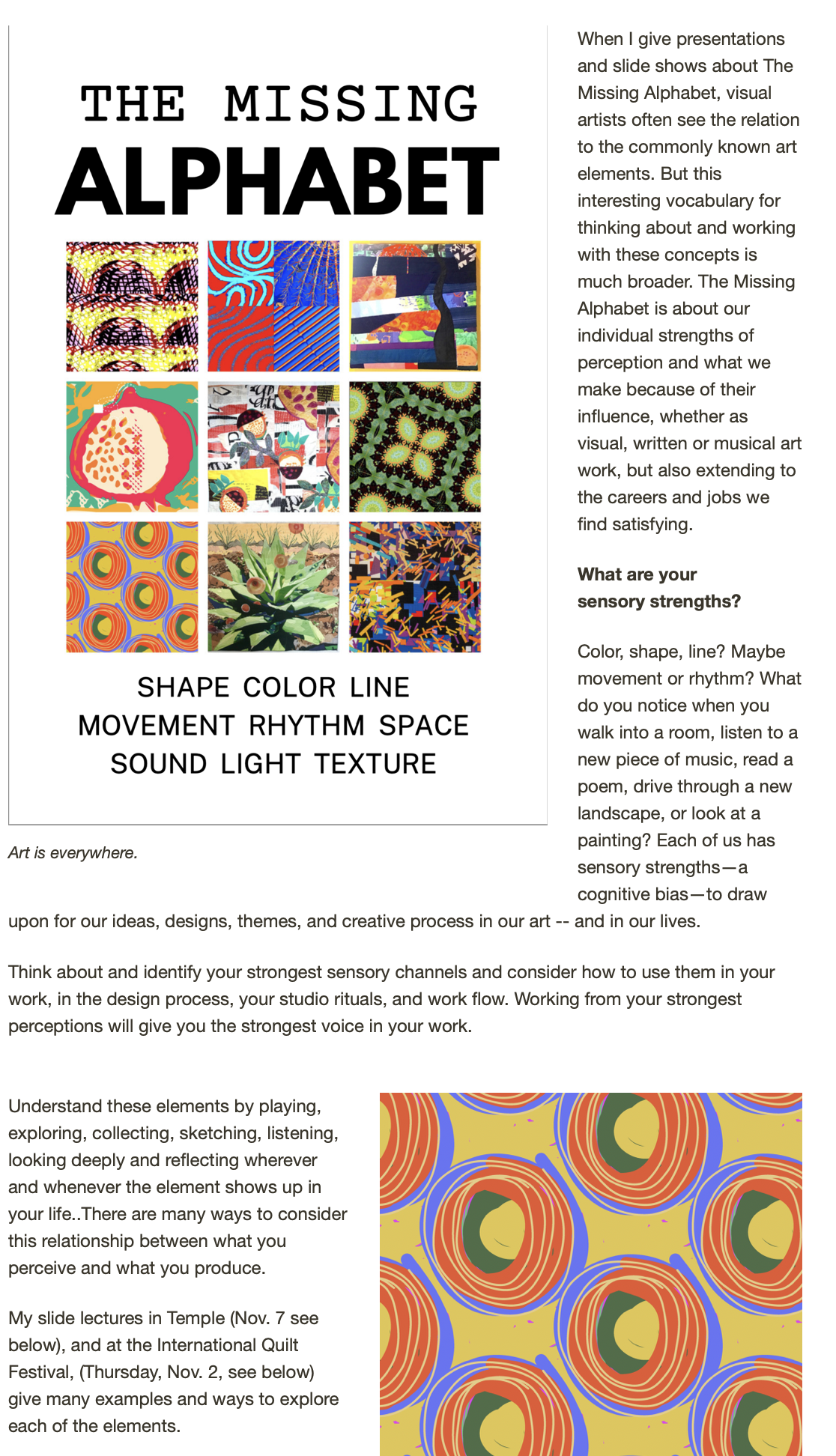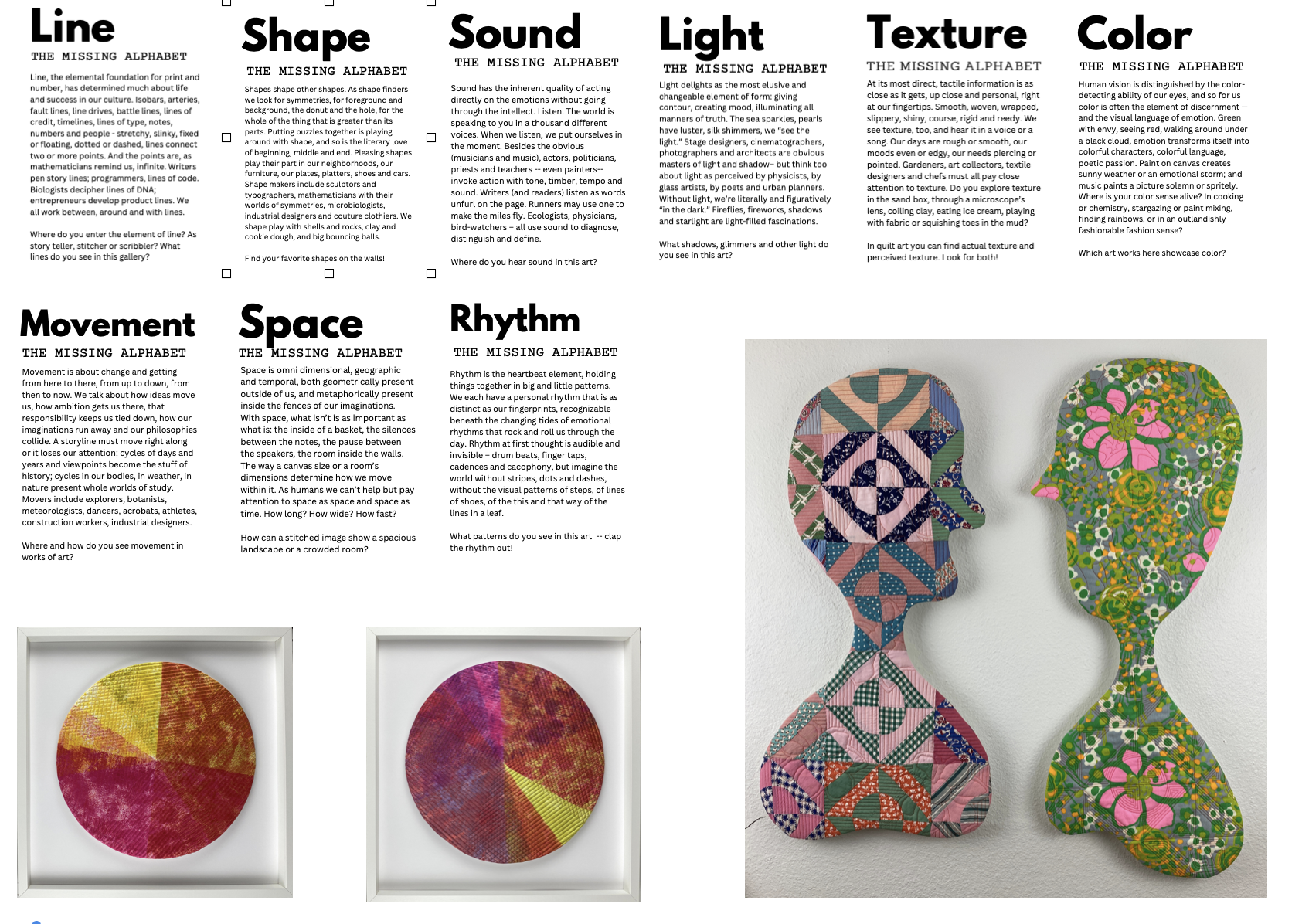Here I am in the heart of the big time quilter's world, feeling, occasionally, like I'm in junior high on the first day and everyone else knows everyone else, except me. Silly. And then the next moment I'm meeting and actually talking to someone who has just been a name on the quiltarts list or in a magazine byline and having a ball. With my tribe, as Seth Godin's new book puts it. And this tribe gathers at the International Quilt Festival.
I'm taking baby steps with teaching here, and learning what and how to teach in such a setting. Then, I'm taking some classes with some of the artists whose work I have long admired: Hollis Chatelain and Libby Lehman, for example. My intent was to post daily with all the news, awards and photos, but here I am, three days later and finally having internet connection (paid for extra) at the hotel. So, no doubt if you care about such things, you already know that Sharon Schamber won the big $10,000 prize for Best of Show with an ornate, patterned and quite breathtaking quilt.
I don't even aim at this kind of quilting, in fact, I suspect that many of the quilters here would not even consider me a quilter. And I'm not, but my work, like that of many fiber artists, still connects my heartstrings to the traditional work of women quilters through time. I suspect we have been piecing small scraps together for much of our human history. And, with the notion of adding personal meaning and style, the art quilt came along and added an entire other dimension to the field.
This afternoon, the art quilt tribe will be at the SAQA booth to meet the "Masters," artists whose work has just been published in a beautiful collection of quilts published by the Studio Art Quilt Association. Many of the artists will be on hand to sign the book, and I want my copy -- and to meet more of these amazing artists.
Earlier, 2:00 to 4:00, I'll be demonstating making an inspiration deck in the mixed media sampler. This is less a technique than an approach, and just so you don't feel like you're missing this little piece of Festival, here's my handout:
Mixed Media Sampler
International Quilt Festival 2008
Instructor: Susie Monday
El Cielo Studio, Pipe Creek, Texas
susiemonday@gmail.com http://susiemonday.squarespace.com
A Personal Inspiration Deck
One suggestion: Make a card a day until your personal deck is complete. 52 is the traditional number for a deck of cards (13 cards in 4 suits) but you can make a deck as large or as small as you wish.
1. Make your own version of the Tarot deck, with your take on each of the archetypes in the major arcana and suits that refer to cups, swords, rods and coins (hearts, diamonds, clubs and spades).
2. Invent your own set with your own categories (think AIR,FIRE, EARTH, WATER or MIND, BODY, SPIRIT,) and personal archetypes (see Caroline Myss book, THE SACRED CONTRACT, for ideas)
3. Simply make cards with images, quotes, colors, etc that are meaningful to you.
4. Make a deck picturing
13 people/ roles/archetypes (judge, seamstress, lover, etc)
13 actions (dance, sing, jump,etc)
13 mental approaches (brainstorm, make a list, blow up the idea, etc)
13 emotions (calm, enegetic, dreamy, determined)
5. Make a deck picturing
13 verbs
13 adjectives, adverbs
13 nouns
13 preposistions,conjunctions
6. Make a deck with mixed media techniques on paper or use an actual deck of cards as the base for each collage.
7. Make a deck of micro art quilts, using interfacing or Tivek as the base for fused and/or sewn cards.
Use your cards for:
Finding a focus or direction when you begin creative work.
To suggest a direction when you feel stuck
As a reminder to include personal meaning and imagery in your work
To add a thoughful or emotional dimension to the work at hand
As the subject for journaling and self-discovery








































